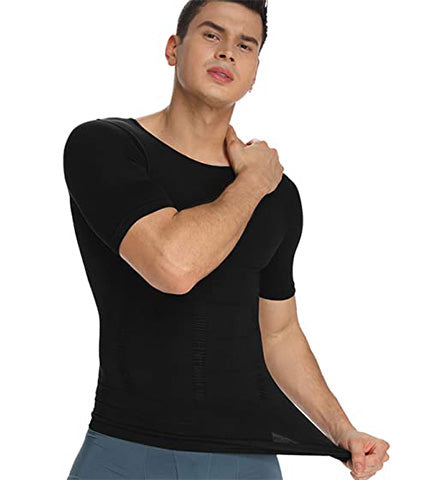Blog
Chest Binding 101: Tips and Care Instructions
Chest binding isn't just for trans men or FTM individuals. In fact, anyone that wants to reduce their chest size or achieve a more flattened chest look can wear a chest binder. That said, trans men do have ample experience with chest binding. The truth is binding is a wonderful way to reduce body dysphoria and affirm identities. Of course, if you're new to all of this, you may be wondering, what exactly is chest binding? Moreover, how do you go about purchasing, wearing, and taking care of your binder? Well, the good news is you’ve come to the right place. Here's a quick overview of all of the things mentioned above.
What's Chest Binding?
Chest binding is the practice of flattening your breast via a binder or some form of body compression garment. In general, clothing that offers compression is often used to support healing tissues, prevent swelling, and reduce tension on scars. However, chest binding compression garments, though similar in design, often serve more of an aesthetic purpose than a medical one. For many people, chest binding started in an attempt to feel more confident, especially for girls who viewed themselves as tomboys. Similarly, FTM top surgery was and is still quite expensive. Consequently, chest binding was a more cost-effective alternative for trans men. That said, not all tomboys or trans men feel the need to wear chest binders. Ultimately, to bind or not to bind is a personal preference that doesn't change what someone identifies as.
Shopping for a Binder
If you're interested in chest binding and purchasing a compressor garment, then, there are a few things you should keep in mind. For instance, though shopping online is how many of us shop for clothes or garments these days, it still helps to find a place that sells them locally. Going into an actual store means you can get on-the-spot assistance, and many of these compression suit retailers will even let you try on the item to ensure the best fit.
Styles and Types
When it comes to styles of binders and types of compression shirts, the good news is you have a few options. In terms of style or type, there are four common garments you can expect to find—long-shirt, mid-length, sports bra, and vest. The most preferred choice is the long shirt compressor garment. Many opt for this particular style/type because it doesn't feel like a bra or vest and can be easily tucked into a pair of pants. Nevertheless, many people do wear a sports bra and vest style garments as well. A sports bra allows for more breathability and compresses your chest only. A vest-style chest binder generally has a Velcro or a zipper closure, which allows for easy removal.
Finding the Best Brand
There are several different brands that offer superior compression. However, it really isn't all about one particular brand here. Rather, you have to find a brand that gives you the coverage or level of compression you're looking for specifically. Moreover, you likely won't know which brand works best for you until you figure out which style and type you prefer. Get ready to do your research and try on a few different brands while you're at it. Note that this is another "you get what you paid for" scenario, so expect to spend a minimum of $30+ for a quality chest binder. There are several binder donation programs available at LGBT centers throughout the US that provide those in need with free binders and compressor garments.

Chest Binding Tips
There are also a few binding tips to keep in mind. For instance, you should never attempt to make your own binder at home. In the past, people have used ace bandages and duct tape, which has only led to harm/injury. It's always better to purchase a tank top, bra, or some other form of compression garment. Other tips include limiting the time you bind for (less than 8 hours is recommended), and removing or taking your binder off before going to bed. If wearing your binder/binding is painful or simply not that comfortable, then you should stop immediately.
Wearing a Chest Binder
Putting on a chest binder will take some getting used to, but once you've mastered the skill, you'll be able to wear any type of body compression suit. That said, your compression clothing should fit properly. This means it should be tight enough to provide adequate support, but it's not so tight that it's uncomfortable or causing you to have difficulty breathing.
Care
When it's time to wash your chest binder, you might want to consider hand washing versus machine washing. You'll extend the lifespan of your garment if you hand wash. If you still prefer to use the washing machine, make sure you use the delicate setting. Once cleaned, regardless of the method, hang dry your chest binder or compressor garment. Other care tips to keep in mind include limiting use, layering underneath to prevent skin irritation, and using cornstarch to help your garment wick away sweat/moisture.
Common Concerns
Lastly, you should keep an eye out for common concerns when binding or wearing your garment. Over time, binding can affect muscle and skin tissue and have an adverse effect on movement. Additionally, wearing your binding clothing can create a perfect environment for yeast to grow and leads to fungal and other bacterial infections. Issues with constricted breathing are also something to watch out for. This is why it's crucial that you find the right size and fit.
Takeaway
Ultimately, these are just a few things you should know about chest binding and compression garments. Taking proper care of yourself and your chest binder will ensure that you can safely wear these kinds of garments. Moreover, following the tips mentioned above and suggestions will reduce the likelihood of injury or discomfort over time.



